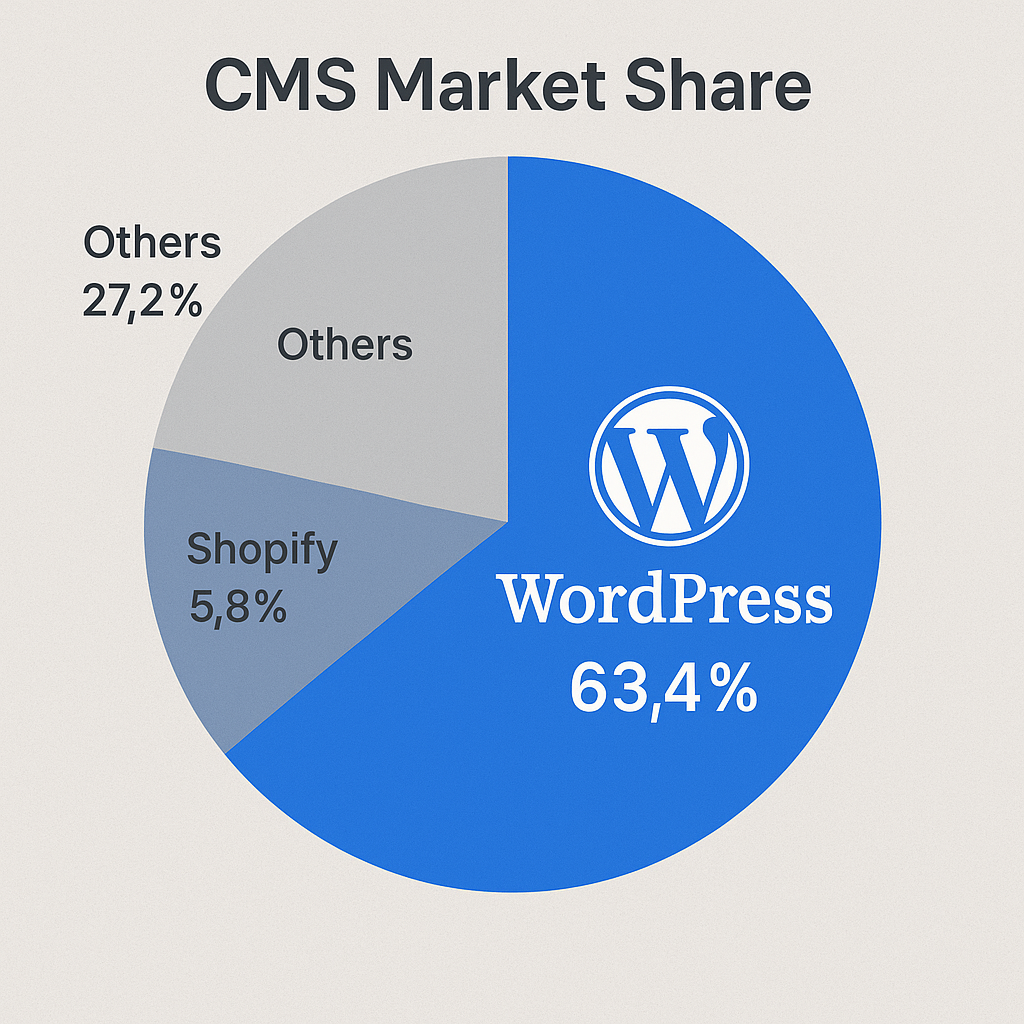The Complete Guide to Leveraging Technology Data for Domain Intelligence
blureshot
October 23, 2025
10 min read
57 views

Understanding the underlying **database website technology** and broader tech stack of any given domain is no longer a luxury, but a fundamental necessity for competitive advantage in the digital landscape. This comprehensive guide will illuminate how dissecting technology data empowers strategic decision-making across various business functions, from sales and marketing to competitive analysis and product development. By analyzing the specific tools, platforms, and services a website employs—be it their CRM, analytics suite, e-commerce platform, or content management system—you gain unparalleled insights into their operational capabilities, potential vulnerabilities, and strategic direction. This deep dive into a website's digital DNA, including its **database website technology**, enables you to identify market trends, pinpoint ideal prospects, and refine your own digital strategy with precision. WebTrackly offers robust solutions to extract, organize, and interpret this complex data, transforming raw technological footprints into actionable intelligence for your business.
## Introduction
In an increasingly digitized world, every website is a complex tapestry woven from various technologies. From the fundamental server infrastructure and programming languages to intricate analytics platforms and marketing automation tools, the technological choices a domain makes reveal a wealth of information. This "digital fingerprint" is what we refer to as technology data, and its analysis forms the core of domain intelligence. For SEO specialists, marketers, data scientists, and sales teams, understanding this data means unlocking new opportunities for growth, efficiency, and competitive edge. This guide will explore the types of technology data available, how it's collected, and most importantly, how you can leverage it to drive superior business outcomes.
## Decoding the Digital Footprint: What is Technology Data?
Technology data, in the context of domain intelligence, refers to the comprehensive set of information about the software, hardware, and services that power a website or digital entity. It's the digital DNA that dictates how a website functions, interacts with users, and integrates with other systems. This data goes far beyond just identifying a **database website technology**; it encompasses a vast array of components that form a site's tech stack.
### Key Categories of Technology Data
The technological landscape of a website can be broken down into several crucial categories:
* **Content Management Systems (CMS):** Platforms like WordPress, Shopify, Drupal, Magento, or custom-built solutions. Knowing a site's CMS can indicate its flexibility, scalability, and typical integration ecosystem.
* **E-commerce Platforms:** Solutions such as Shopify, WooCommerce, BigCommerce, or Salesforce Commerce Cloud. Essential for understanding a competitor's online sales capabilities or identifying potential clients in the e-commerce sector.
* **Analytics & Tracking Tools:** Google Analytics, Adobe Analytics, Matomo, Hotjar, Segment. These reveal how a site measures performance, tracks user behavior, and optimizes conversions.
* **Marketing Automation & CRM:** HubSpot, Salesforce, Marketo, Pardot, Zoho CRM. Crucial for understanding a company's sales and marketing processes, lead management, and customer relationship strategies.
* **Advertising & Retargeting:** Google Ads, Facebook Pixel, Criteo, Taboola. Provides insight into a site's advertising spend, targeting strategies, and audience engagement efforts.
* **Hosting Providers & CDN:** AWS, Google Cloud, Azure, Cloudflare, Akamai. Indicates infrastructure robustness, geographical reach, and performance optimization priorities.
* **Programming Languages & Frameworks:** PHP, Python, JavaScript, React, Angular, Ruby on Rails. Offers clues about development capabilities, technical debt, and potential for innovation.
* **Databases:** MySQL, PostgreSQL, MongoDB, Oracle. The **database website technology** choice often reflects the scale of operations, data complexity, and security considerations.
* **Security Tools:** SSL certificates, WAFs (Web Application Firewalls), DDoS protection services. Essential for assessing a site's commitment to security and data privacy.
* **Payment Gateways:** Stripe, PayPal, Square, Adyen. Reveals payment processing capabilities and target markets.
WebTrackly's comprehensive dataset at `/datasets/#technology` provides detailed insights into these and many more categories, allowing you to build a complete picture of any domain's digital infrastructure.
## The Power of Technology Data in Domain Intelligence
Access to granular technology data transforms raw information into strategic intelligence. It enables businesses to make informed decisions across various departments, from identifying market opportunities to optimizing internal processes.
### Fueling Sales & Lead Generation
For sales teams, identifying the specific technologies a prospect uses is a game-changer. Imagine a scenario where your product integrates seamlessly with Salesforce. By leveraging technology data to identify companies using Salesforce, you can craft highly personalized outreach messages, demonstrating immediate value and relevance. This targeted approach significantly improves conversion rates compared to generic cold outreach. Similarly, understanding a competitor's **database website technology** can reveal their architectural choices and potential pain points that your solution could address.
### Enhancing Marketing & SEO Strategies
Marketers can use technology data to:
* **Competitor Analysis:** Uncover what tools competitors are using for SEO, analytics, advertising, and content delivery. This can reveal their strengths, weaknesses, and potential gaps in your own strategy. For instance, if competitors are using advanced A/B testing tools, it signals a focus on conversion optimization that you might need to match.
* **Personalized Content:** Segment audiences based on their technology stack. A company using an open-source CMS might be interested in different content (e.g., development tutorials, plugin recommendations) than one using an enterprise-grade solution.
* **Market Trend Identification:** Spot emerging technologies or declining platforms. This helps in anticipating market shifts and adapting your product or service offerings.
* **SEO Audits:** Identify performance bottlenecks related to hosting, CDNs, or specific website technologies that might be impacting load times or mobile responsiveness.
### Strategic Product Development
Product teams can gain invaluable insights by analyzing the tech stacks of their target market or competitors:
* **Integration Opportunities:** Discover popular platforms that your product could integrate with, expanding its ecosystem and market appeal.
* **Feature Prioritization:** Understand what tools users are already employing to solve specific problems, informing new feature development or improvements.
* **Competitive Benchmarking:** Assess the technological sophistication of competitors' products and identify areas where your product can innovate or differentiate.
### Risk Assessment & Security Intelligence
For security professionals and data scientists, understanding a domain's tech stack is critical for risk assessment. Identifying outdated software versions, unpatched systems, or known vulnerabilities associated with specific technologies can inform security audits, penetration testing, and threat intelligence. A thorough understanding of a company's **database website technology** and other infrastructure components is paramount to assessing its digital resilience.
## Use Cases for database website technology
1. **Competitive Intelligence & Benchmarking**
By analyzing the **database website technology** and broader tech stack of your competitors, you can gain a clear understanding of their operational backbone. For example, if a competitor is heavily invested in a specific marketing automation platform, it suggests their strategy leans towards sophisticated lead nurturing. You can benchmark your own technology choices against theirs, identify gaps, or discover opportunities to differentiate. This extends to understanding their hosting, CDN, and security measures, giving you insight into their performance and resilience.
2. **Market Segmentation & Lead Scoring**
Sales and marketing teams can dramatically improve their targeting by segmenting prospects based on the technologies they use. If you sell a plugin for WordPress, identifying all websites running WordPress instantly creates a highly qualified lead list. Similarly, if your solution integrates with a specific CRM, you can prioritize leads already using that CRM. This precise segmentation, powered by deep **database website technology** insights, allows for hyper-personalized outreach and significantly higher conversion rates.
3. **Partnership & M&A Opportunity Identification**
Identifying companies using complementary technologies can uncover potential partnership or acquisition targets. For example, if you offer a payment gateway, finding e-commerce sites using a specific platform but lacking an integrated payment solution presents a clear partnership opportunity. For M&A, understanding the tech stack of a target company helps in due diligence, assessing integration challenges, and evaluating the value of their digital assets.
4. **Technology Trend Analysis & Product Innovation**
Data scientists and product managers can track the adoption rates of new technologies or the decline of older ones across various industries. This allows for proactive product development, ensuring your offerings remain relevant and cutting-edge. For instance, observing a surge in the adoption of a particular JavaScript framework or a new **database website technology** can signal a shift in development preferences, guiding your own engineering roadmap.
## Best Practices for Leveraging Technology Data
To maximize the value derived from technology data, consider these best practices:
* **Define Your Objectives:** Before diving into data, clearly articulate what you want to achieve. Are you looking for sales leads, competitive insights, or market trends? This will guide your data collection and analysis.
* **Integrate Data Sources:** Combine technology data with other data points like firmographics, technographics, and behavioral data for a holistic view.
* **Regularly Update Your Data:** The digital landscape is constantly evolving. Ensure your technology datasets are fresh and regularly updated to reflect current realities. WebTrackly's solutions are designed for continuous data refresh.
* **Focus on Actionable Insights:** Don't just collect data; analyze it to find clear, actionable insights that can inform your strategies.
* **Prioritize Privacy and Compliance:** Always ensure that your data collection and usage practices comply with relevant data privacy regulations (e.g., GDPR, CCPA).
* **Utilize Advanced Analytics Tools:** Leverage platforms like WebTrackly that offer sophisticated tools for filtering, segmenting, and visualizing technology data. Our comprehensive dataset, available at `/datasets/#technology`, is built for this purpose.
### Unlock Deeper Insights with WebTrackly
Ready to transform your approach to domain intelligence? WebTrackly provides unparalleled access to the most extensive and accurate technology datasets available. Our platform allows you to:
* **Identify specific technologies:** Pinpoint precise versions of CMS, analytics tools, CRMs, and even **database website technology** used by millions of domains.
* **Filter and segment:** Create highly targeted lists based on any combination of technological criteria, geographic location, industry, and more.
* **Track historical changes:** Monitor technology adoption and abandonment over time to spot trends and anticipate market shifts.
**Browse our comprehensive technology datasets today at `/datasets/#technology` and discover how WebTrackly can empower your business.**
## FAQ
**Q: What is the primary benefit of knowing a website's technology stack?**
A: The primary benefit is gaining a deep understanding of a website's operational capabilities, strategic priorities, and potential vulnerabilities. This intelligence is invaluable for targeted sales, competitive analysis, market research, and informed product development.
**Q: How does WebTrackly collect technology data?**
A: WebTrackly employs advanced proprietary scanning and analysis techniques that meticulously inspect websites' code, headers, and other publicly available signals. This robust methodology allows us to accurately identify a vast array of technologies, including specific versions and underlying infrastructure like **database website technology**.
**Q: Can I track historical changes in a website's technology stack?**
A: Yes, WebTrackly's platform is designed to track historical changes in technology adoption and abandonment. This feature is crucial for understanding market trends, monitoring competitor evolution, and identifying opportunities for timely engagement.
**Q: Is technology data useful for SEO?**
A: Absolutely. Technology data helps SEO specialists identify performance bottlenecks (e.g., slow hosting, outdated CMS), understand competitor's SEO tools, and tailor content strategies based on the technical capabilities of target websites or audiences. It also reveals insights into a site's overall technical health.
**Q: How can sales teams leverage database website technology information?**
A: Sales teams can use **database website technology** information to qualify leads more effectively, personalize outreach messages, and identify integration opportunities. Knowing a prospect's database choice can indicate their scale, data handling needs, and potential compatibility with specific enterprise solutions.
## Conclusion
The digital landscape is a battleground where information is power. Understanding the intricate details of a domain's technology stack, including its **database website technology** and the full array of tools it employs, provides an unparalleled strategic advantage. From fueling targeted sales campaigns and refining marketing strategies to informing product development and mitigating security risks, technology data is the bedrock of modern domain intelligence.
Don't navigate this complex world blind. Empower your teams with the granular insights they need to succeed. WebTrackly is your trusted partner in unlocking this powerful data, offering comprehensive, accurate, and up-to-date technology datasets.
**Ready to gain a competitive edge? Start your free trial with WebTrackly today or browse our packages to find the perfect solution for your domain intelligence needs.**
---
**Related Resources:** [WebTrackly Datasets](https://webtrackly.com/datasets/) | [WebTrackly Packages](https://webtrackly.com/packages/) | [WebTrackly Documentation](https://webtrackly.com/docs/)




